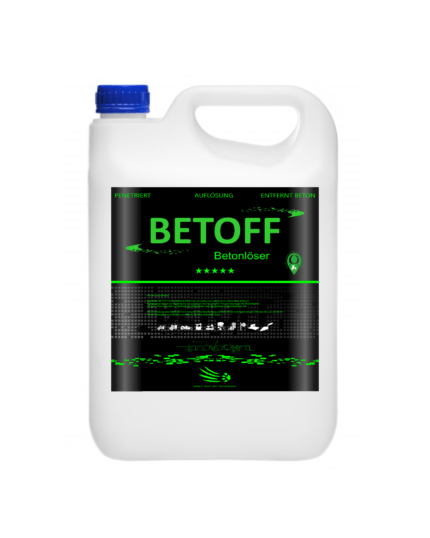Removing cement layer. After installing tiles, mortar residue is readily cleaned with a moist towel. But unattractive gray cement frequently still appears on the walls and flooring. We have created techniques that will enable you to swiftly and simply get rid of cement stains.
Removing cement layer. Cement curtains are not limited to experts or amateurs.
Ugly cement veils frequently persist after the operation is completed and the tile is not dripping with moisture, especially when the tiles are first laid and grouted flawlessly. Cement curtains must almost always be removed, regardless of how meticulously you work and how clean you are, unless you remove them like a skilled tiler or stonemason, leaving the grout totally and instantly clean. Practice, however, reveals that these fog-like areas only show up when the tiles and grout have completely dried and the space is brightly lit—that is, when obtrusive shadows actually exist.
Removing cement layer. How are cement curtains created during tile installation?
Naturally, there is a tight relationship between the surface structure, base material, and tile material color and the visibility intensity of cement curtains. Occasionally, it’s difficult to see the curtains themselves at all. On the other hand, you may notice some obvious dullness in certain areas if you gently brush your fingertips over the surface. Even with diligent labor, the appearance of visually bothersome gray spots is almost inevitable when grouting tiled surfaces, whether vertically or horizontally. But the issue with the cement curtain arises as soon as the mortar is applied to the surface that has to be treated and is placed in the squeegee.
Removing cement layer. Wet, clean towels to protect against the worst
At first appearance, a bold and most importantly quick wiping helps, but you can never fully prevent a faint but noticeable gray veil, especially with somewhat lighter stone slabs and tiles. It’s crucial to replace mop cloths frequently and make sure they don’t leak moisture when working. This would just cause the grout between the tiles to wash out even more, and the amount of liquid that has built up in the cloth also helps to produce a cement curtain. However, if you follow our advice, there won’t be any evidence of the cement curtain, so don’t even bother trying to remove it.
Removing cement layer. Depending on the substance, the cement film can be removed.
It’s crucial to realize that different materials need for different techniques before you begin scraping off the cement layer. For example, experts recommend against using very powerful cement removers to clean the ground or particularly delicate limestone surfaces (such as travertine, marble, or artificial stone). Burns on the surface are quickly acquired and are irreversible. In actuality, dark and occasionally almost black coverings are mistakenly marketed as granite, a stone noted for its resistance to acidity. These are frequently low-quality replicas of basalt stones, which are extremely acidic and whose natural color can be totally obliterated by chemicals used to remove cement residues. If you have any questions regarding the material, you should always get professional guidance from a specialized business before employing acidic cleaning chemicals.
Removing cement layer. Prior to removing the tile’s cement coating
Equally significant as the new tile’s visual appeal for a bathtub or shower stall. After the grout between the tiles has fully set, only then can the cement curtain be removed. If not, the bonding agent—which is still wet inside—would induce the appearance of a fresh, potentially broader curtain. The adherence of the tiles to the wall may completely weaken or stop working if an aggressive cleaning solution gets unintentionally combined with the mortar. When the grout is fully set—a reliable way to test this is by using a thumbnail—you may begin peeling back the cement veil. It can take a week for this to occur, though.
Removing cement layer. Method of trial and error
Given that you are a novice do-it-yourselfer and are unsure of the exact reactions the tiles will have to various methods of eliminating cement residues from the surface, we can confidently suggest a product called Betolix-Bio product, which will undoubtedly be helpful and won’t inflict more harm. In any case, before beginning any cleaning, the surfaces that need to be cleaned should be completely free of dust and debris. Naturally, you also require a cleaning agent, which we recommend you to keep on hand based on our experience:
- latex gloves resistant to tears for as long as feasible;
- a respirator (while keeping the room well-ventilated);
- a mop, brush, and many hand gloves;
- One pail of water—one for the clean water and one for the cleaning solution—ed to clean);
- Take common cement film solvents out;
- Home cures:
- These consist of concentrated vinegar, lemon juice, laundry detergent, and powdered dishwasher detergent;
Using a moderate solution at first, and subsequently a severe one, remove the cement layer.
If there aren’t many visible cement traces on the tile surface, it’s advisable to begin cleaning with a weak solution of natural acid. It is easy to assess the efficacy on the surface that needs to be cleaned in a discrete area. It would be even better if you gathered the remaining tile fragments and liberally applied the cleaning solution to them. Then, after about fifteen minutes, you could rinse it off with clean water. Try the same procedure on a cross-section with a cement veil, and make sure that the tested tile’s surface and color don’t alter afterwards.
Home remedies typically work rather effectively with just one application, and you should notice results even with the weakest cleaning solution—lemon solution, for example. Lastly, try a detergent that has to be dissolved as much as possible in lukewarm lye. If not, the powder’s coarse-grained composition may occasionally result in unattractive scratches on the tile’s surface. Then, to ascertain whether the cement layer has been effectively removed, it should be rinsed multiple times and then wiped dry.
An substitute would be specialized chemical cleaners from specialty stores.
In fact, it’s crucial that just the tiles—not the cement or silicone grout—come into touch with the cleaner while cleaning a cement curtain. It is challenging to entirely erase any potential discoloration in hindsight. When using it, make sure you stick to the set mixing ratio and follow the manufacturer’s instructions found on the sales package. Many of the people here are harmful and in some cases inflict more harm than good. It is not advisable to rinse off commercial cement film removers with clean water right away after application because the majority of them need some time to work. Nevertheless, certain cleaning chemicals must not be allowed to dry, therefore it is preferable to work with them piece by piece, that is, on surfaces no more than two square meters at a time.
Removing cement layer. Hydrochloric acid is not a good idea.
One of the traditional methods for getting rid of cement residues in the business sector is hydrochloric acid. It is exceedingly volatile, but regrettably also very corrosive, and it has good lime-dissolving characteristics even at concentrations of about five percent. In actuality, this means that the acidic components quickly transform into rust film, which adheres to metals—including stainless steel—and electrical parts like switches and circuit boards.
The building cleaning industry publication “rationally cleaning” published an article in January 2015 about a particularly problematic example in which the cost of removing a cement coating was very high. A huge kitchen placed an order with the building cleaner, who utilized hydrochloric acid in a conventional concentration. Ultimately, the effort produced positive outcomes with regard to the order itself. But all of the stainless steel components in this new, enormous kitchen had rusted in the interim, and the company was summoned for an urgent on-site visit the very following day. The compensation claim had a total value of 180,000 euros.
Cement residue removal using BETOFF liquids!?
A good acidic alkaline cleaner is offered by BETOFF and may be purchased at specialty stores in smaller 2.5-liter containers. BETOFF solutions can be used to remove cement curtains as well as hard-to-remove dirt without requiring a lot of human labor.
Safety and health at work when cleaning up cement leftovers
When removing cement curtains, you should always take specific safety precautions for your own protection, regardless of whether you like using chemical, steam, or household cleansers. It is always essential to wear appropriate clothing and make sure there is enough ventilation in the workplace because the majority of cleaning chemicals are agents that will unavoidably come into contact with the skin and respiratory tract. Additionally, take note of the following:
- It is highly advised to wear protective gear, gloves, and eye and facial protection when working with chemical cleaning solutions.
- In the wrong circumstances, combining cleaning products might result in burns or harm to the skin and eyes.
- As soon as possible, take off any contaminated clothing, and thoroughly wash any afflicted skin.
- Cleaning supplies for cement curtain removal should always be kept locked up and out of children’s reach.
Removing cement layer. Removing the covering of cement.
BETOFF is a liquid that dissolves cement and concrete very fast. It is a most effective liquid on the market. You need only 3 minutes to dissolve concrete stain. Check this out!

Cement stain removal TIPS AND TRICKS
Did you not place the new tiles by yourself? By reporting the flaws and scheduling an appointment, you will save a great deal of time and aggravation if you trusted a specialized firm with this renovation project. Tilers are required by VOB and BGB to remove the resulting cement curtain as part of the final or rough cleaning of building sites, leaving no trace behind.
